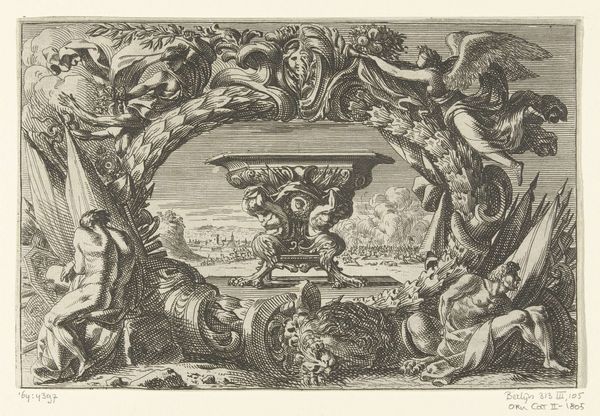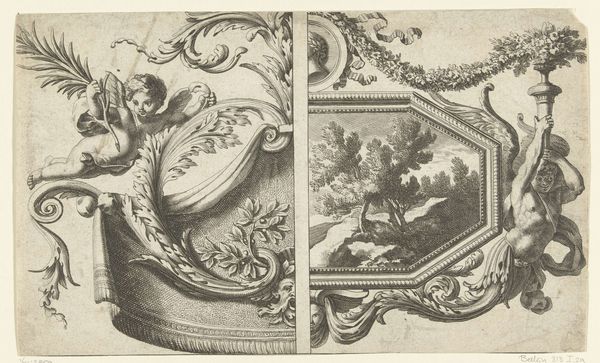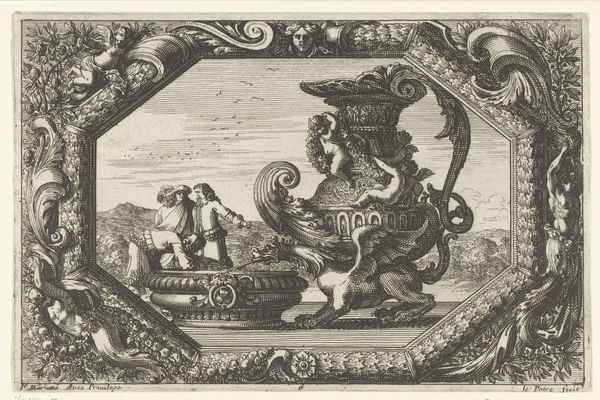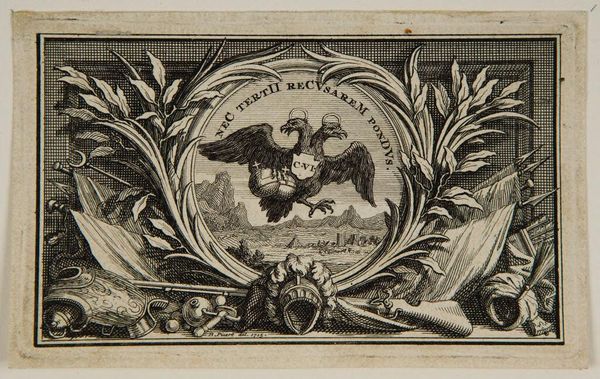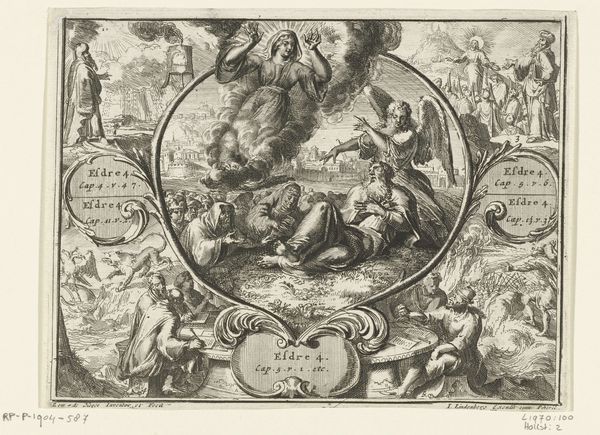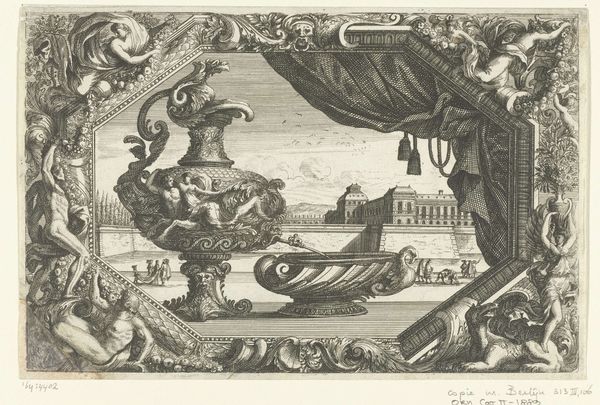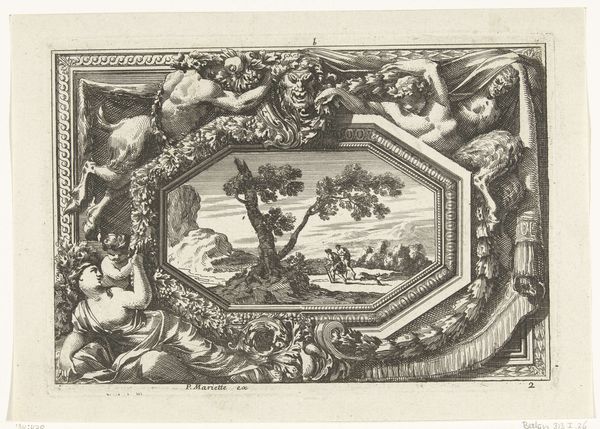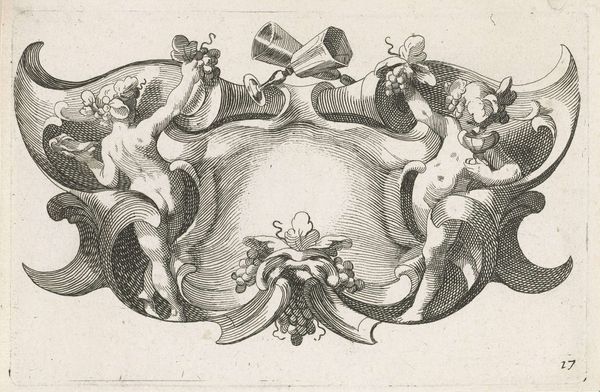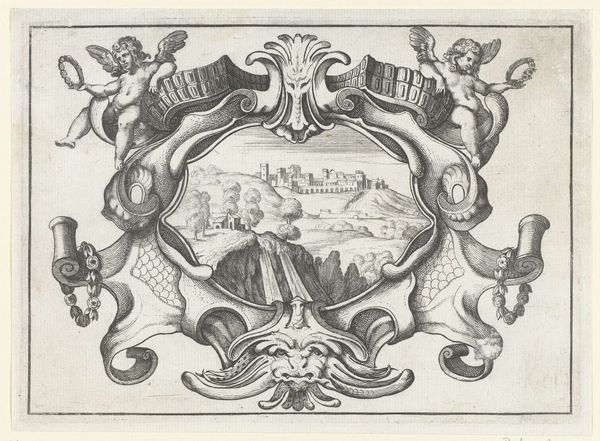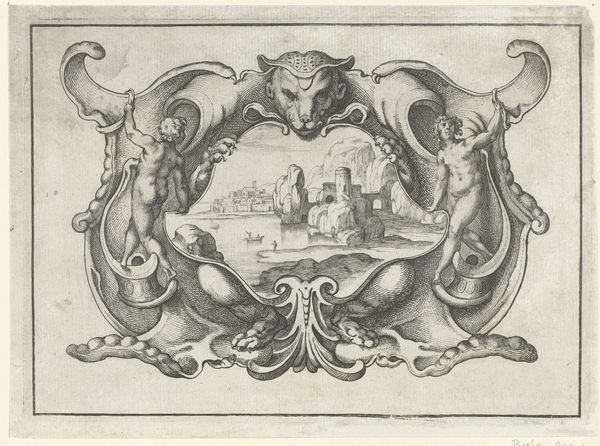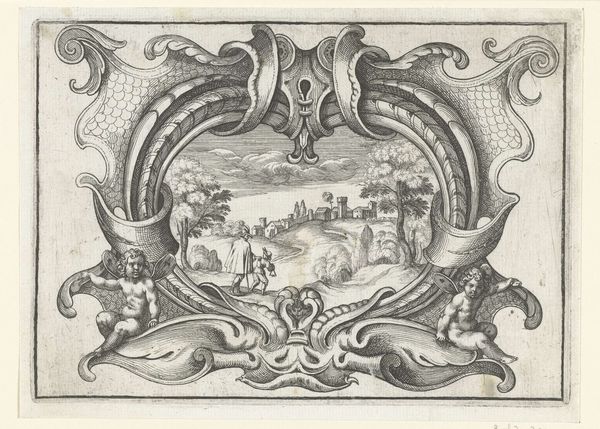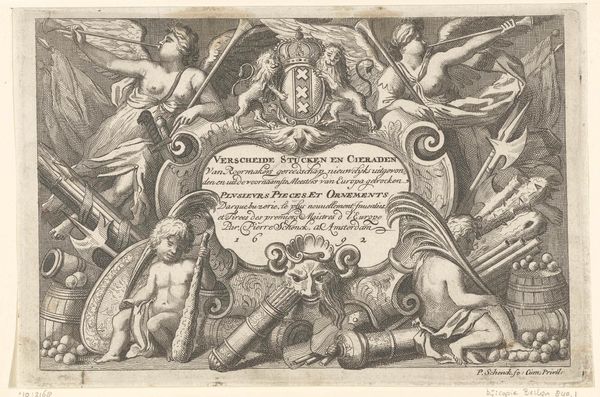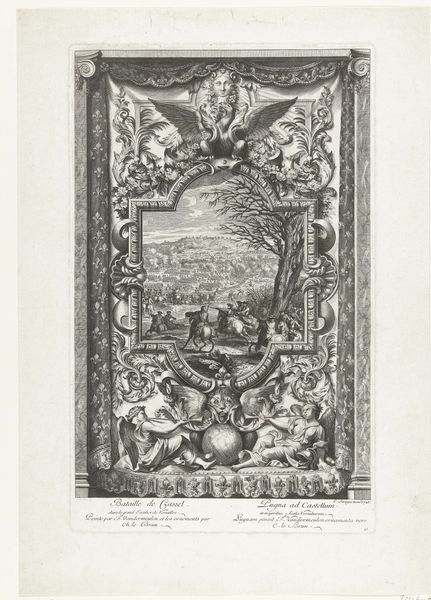
print, etching, engraving
#
allegory
#
baroque
# print
#
etching
#
history-painting
#
engraving
Dimensions: height 61 mm, width 99 mm
Copyright: Rijks Museum: Open Domain
Curator: Right, so we’re looking at "Double-Headed Eagle", a print dating back to 1715 by Bernard Picart, currently held here at the Rijksmuseum. First thoughts? Editor: My first thought is, dramatic! There's a real weight, a severity in the hatching that creates a lot of shadow and tension in this little scene. Curator: Indeed. Picart was a master of etching and engraving. The intricacy he achieves is just incredible when you consider the tools and the size of the original plate. And look at that framing! It really encloses the central image, which depicts the eagle against this serene landscape. Editor: Precisely, and I see so much embedded symbolism. The double-headed eagle itself is a powerful symbol representing empires, perhaps a commentary on dual power structures, then and even now, in modern governance, maybe. It seems to bear a shield, almost reluctantly. Curator: Good observation! The eagle was a symbol of the Holy Roman Empire, so that reading absolutely aligns with historical context. And the motto above – "NEC TERTI RECVSABREM PONDVS" – it seems to speak to carrying the weight of responsibility. A potent image for its time. Editor: Yes, and thinking about the context… early 18th century, the echoes of grand dynastic ambitions were everywhere, empires were clashing. How do you see the role of allegory in his larger body of work, do you find he's typically critical or more celebratory of institutions and established authority? Curator: That’s a complex question! He often employed allegory to critique power but also sometimes to offer reverence. In the case of this engraving, my read is Picart is more critical because of that loaded imagery combined with the overall stern mood of the piece. It’s definitely asking more questions than offering answers, wouldn’t you agree? Editor: Absolutely. There’s a push-and-pull quality here. Even the foliage that frames the central image feels almost like constraints. It points towards imprisonment, maybe a commentary on the burdens of leadership. It leaves me considering those burdens now, too. It is a burden or an honor or maybe a bit of both? What are the implications for those ruled by such figures? It creates interesting critical tensions that still have resonance today, I think. Curator: I couldn't have said it better myself. Picart, through his intricate artistry and symbolic language, invites us to contemplate the very nature of power and responsibility and the inevitable weight that comes with it. Editor: A tiny artwork that leaves us contemplating the weight of centuries! I love that.
Comments
No comments
Be the first to comment and join the conversation on the ultimate creative platform.
